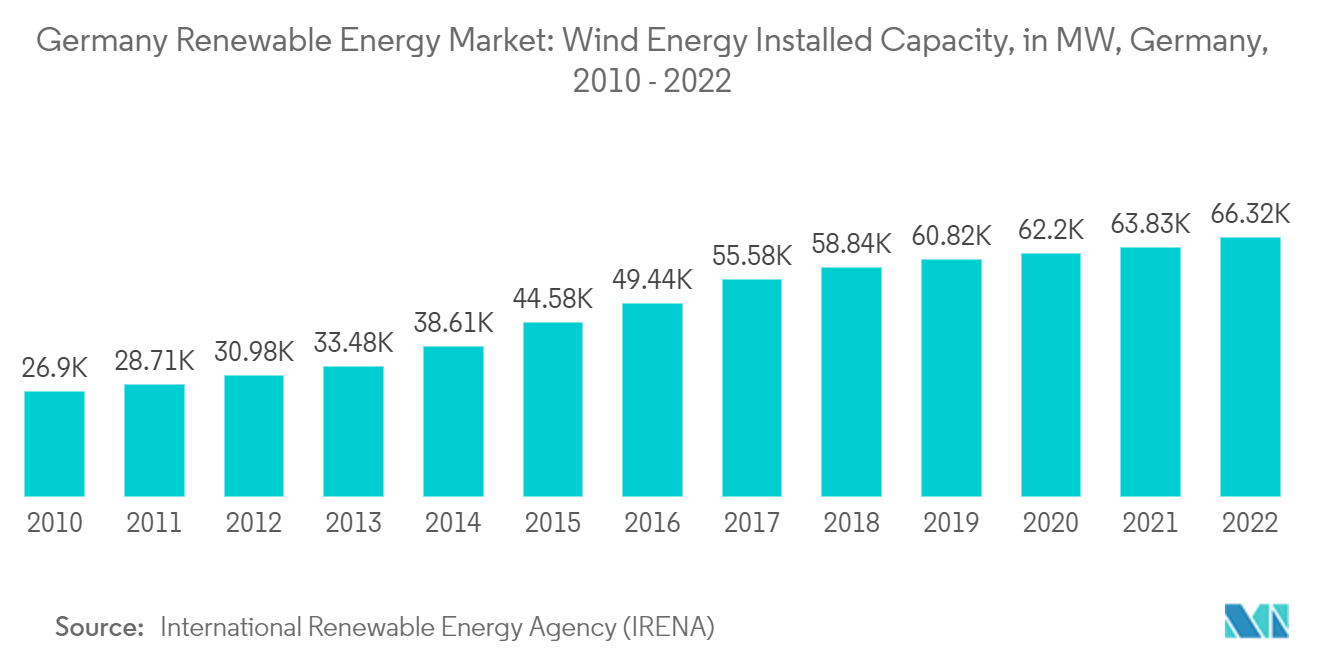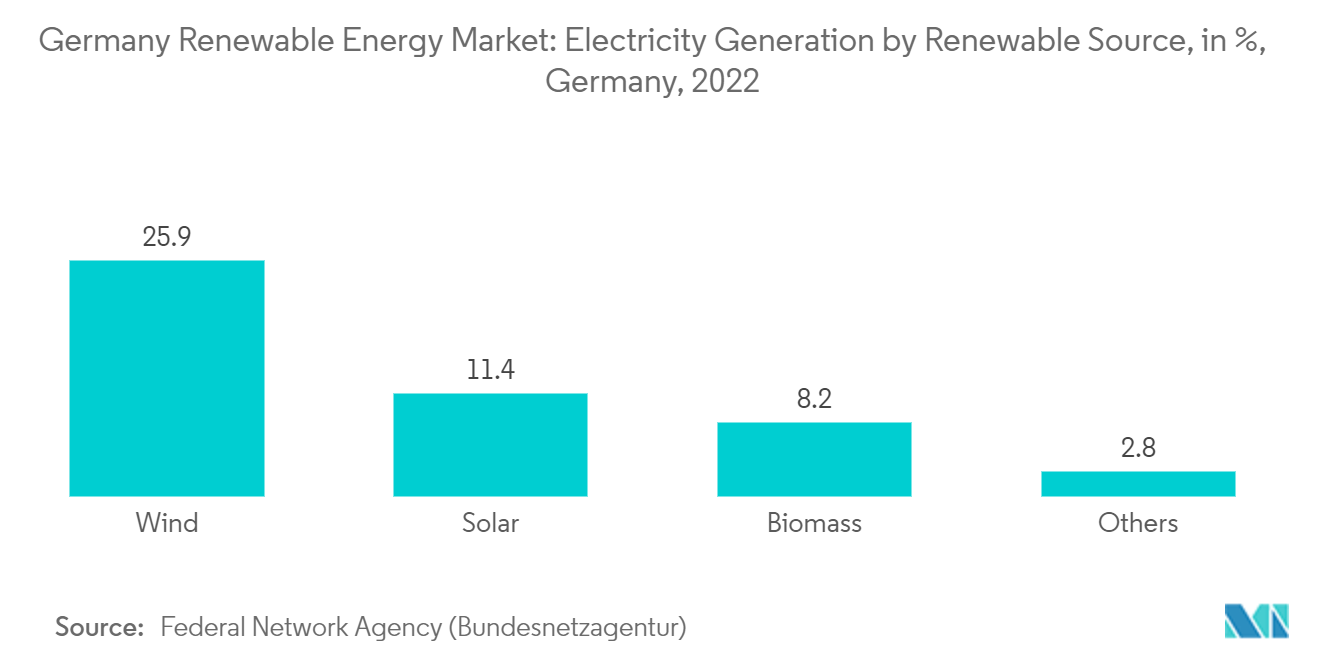Market Trends of Germany Renewable Energy Industry
Wind Energy Segment is Expected to Dominate the Market
- The installation of wind energy is increasing across the country owing to the increasing demand for electricity and the pledge to reduce dependency on fossil fuels for power generation.
- In 2022, the country installed around 2,745 MW of new wind capacity increased from 1,925 MW. With the new installation, the total wind energy capacity reached around 66,315 MW, including onshore and offshore installations in 2022.
- Germany aims to reach 20 GW installed capacity from offshore wind farms by 2030; Germany has already attained around 8055 MW of offshore wind power capacity in 2022. Offshore wind speeds are faster than land, proving higher efficiency than onshore wind energy.
- Out of the total 233.9 TWh generated from renewable in Germany, wind farms (onshore and offshore) accounted for a share of 25.9% in 2022. The ongoing developments and the current growth in the offshore wind energy market compared to the onshore wind energy market justifies their potential in the future.
- In September 2022, Mercedes-Benz, a German luxury and commercial vehicle automotive manufacturer, announced its plan to build a wind farm in the northwestern German state of Lower Saxony by the year 2025, which will likely be able to produce a hundred megawatts of electricity, equivalent to over 15 percent of the carmaker's annual demand in Germany.
- Government policies and targets play a crucial role in wind power development. As countries become increasingly concerned about climate change and the role of renewable energy in curtailing it, wind power, along with other renewable energy types, is expected to have more focus from the country during the upcoming years.
- Owing to the above points, the wind energy segment is expected to dominate the market during the forecast period.

Reducing Dependence on Fossil Fuel Imports to Drive the Market
- The German government has announced offering a subsidy to reduce imports through acts like - The Renewable Energy Sources Act (EEG), which outlines the support for renewable electricity production, offering a feed-in tariff scheme for plants.
- Germany has few oil and gas resources to supply its energy consumption demand and is trying to reduce its dependence upon imports. The country is trying to transition from fossil fuels to renewable energy.
- In October 2022, Germany passed legislation to end coal-based power generation by 2038. The energy demand and supply gap are expected to be filled with renewable energy, with a large share taken up by wind and solar energy.
- In 2022, the contribution of renewable energy generation increased to 48.3% from 42.7% in 2021. Wind energy contributed 25.9%, whereas solar contributed around 11.4% in the energy mix.
- Hence, the government of Germany is utilizing acts like subsidies, innovation, and laws to reduce the dependence on imports and provide energy security to the country.


